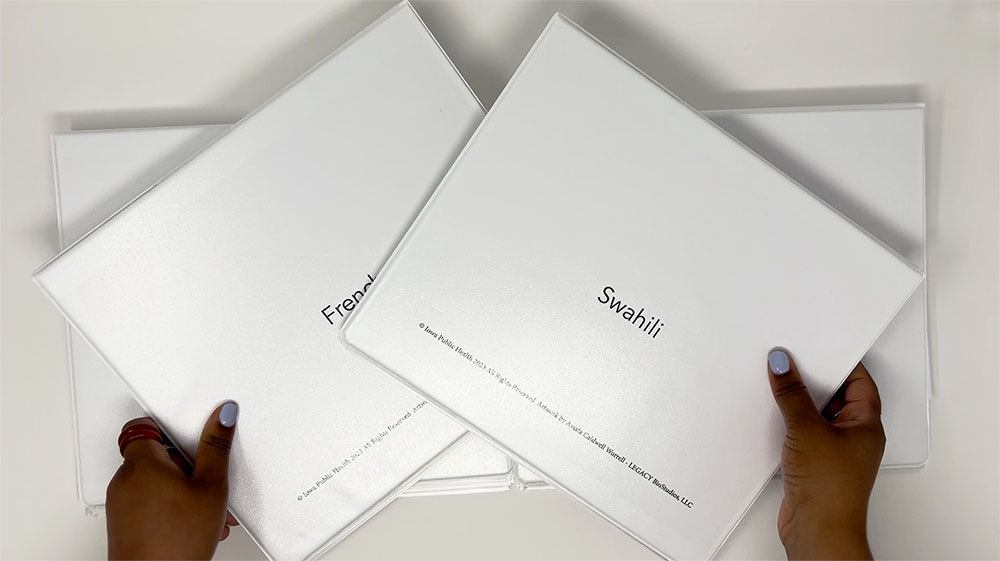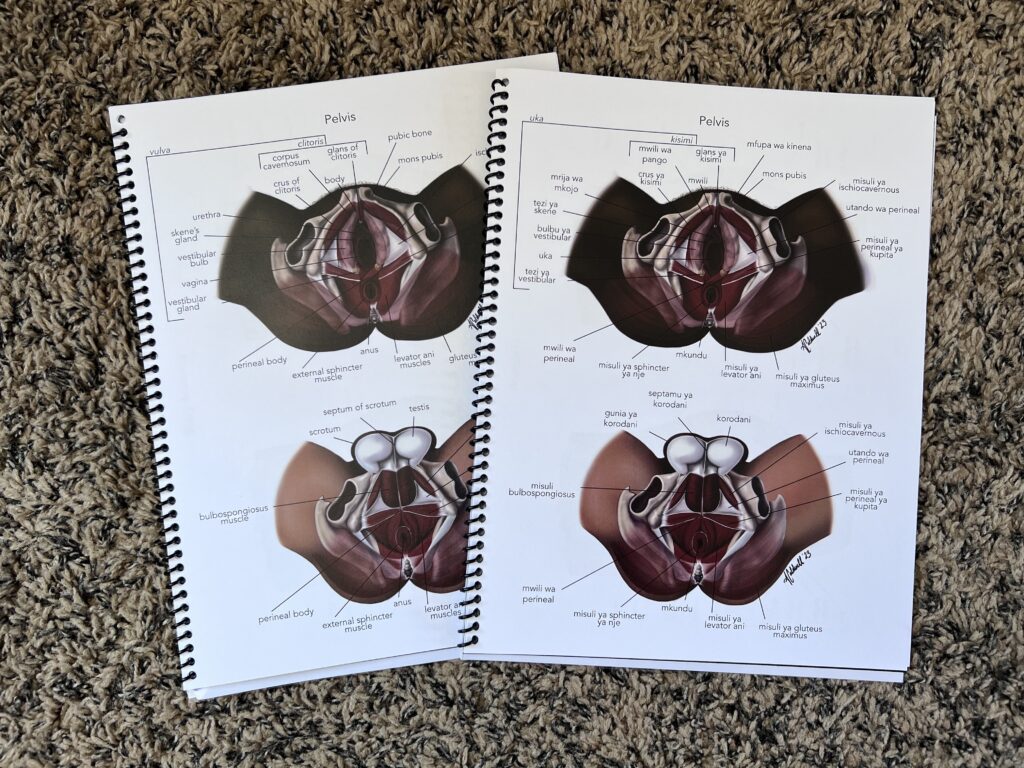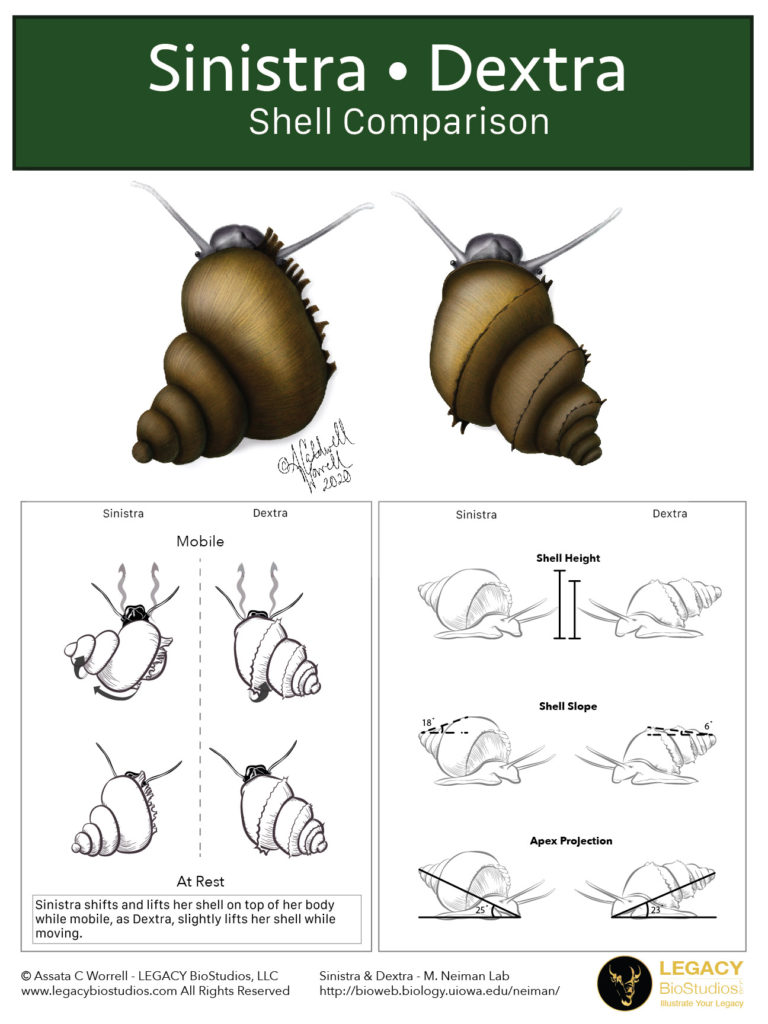Posts by Assata
Full Picture, Full Power: The Role of Context in Health Literacy
Understanding female anatomy shouldn’t be a mystery—but for many people, it still is. As a medical illustrator, I’ve seen how much confusion and discomfort exists around the vulva, vagina, and uterus—often because diagrams are incomplete, censored, or overly clinical. At a recent reproductive justice art show, I was reminded just how powerful a full, clear…
Read MoreInclusive Maternity Education Lookbooks: A Case Study
Project Background The Director of Johnson County Public Health initiated this project after noticing the success of a dental diversity project displayed at the iSmile clinic. They wanted something similar for the Women, Infant, and Children (WIC) clinic to address challenges in patient engagement, particularly among people of color and immigrants. Patients often did not…
Read MorePherDal At-Home Insemination Kit
Introduction PherDal is the only fully sterile at-home insemination kit on the market, designed to provide a safe and effective alternative for individuals and couples trying to expand their families. My role in this project involved creating an introductory animation, video editing, infographics for FDA application, and a detailed “How To” video that clearly demonstrated…
Read MoreProcreate vs. Adobe Photoshop – Which is better?
What is the stronger tool to create digital art? The O.G. titan – Adobe Photoshop or the new and creative Procreate? I tried both, and while both tools have pros and cons, I realized there is definitely a system that works best for me. So, come hang out in the biostudio with me and listen…
Read MoreCan you hold your flatulence? The Importance of the Pelvic Floor
What I learned from a pelvic floor therapist about the importance of taking good care of our pelvic floor. I recently had the opportunity to meet Brittney Davis, a pelvic floor specialist at Rock Valley Physical Therapy here in North Liberty, Iowa. Our initial meeting stemmed from a maternity project I recently completed. I quickly…
Read MoreGoing to a Museum? Bring a Sketchbook!
My favorite museum activities as an illustrator and why I can easily spend an entire day exploring even the smallest natural history museum. Recently, my husband and I went on a museum tour. We hopped on a bus with other members of the Cedar Valley Rocks and Minerals Society and went to the University of…
Read MoreEpisode 3: Dr. Caldwell – Dentist and Community Supporter
Allow me to introduce one of the most influential people in my life and my community, Dr. Caldwell, or as I know her, Mom. Dr. Caldwell has been practicing dentistry for over 35 years, and that experience goes beyond oral healthcare. For many of us, this year has ripped off the rose-colored glasses and exposed…
Read MoreEpisode 2: Iowa MOST (Miles Of Smiles Team)
Cleft lip, palate, and more! What Rotary is doing about it. I enjoyed talking with my fellow Rotarian, Deb Dunkhase, about one of Rotary’s most impactful projects. Deb is the project leader of IowaMOST (Miles of Smiles Team) and shared with me a little about what they do, why they do it, and some of…
Read MoreEpisode 1: Welcome To The BioStudio
Hello, New Listener! My name is Assata, and I am the founder and principal of LEGACY BioStudios, LLC. Welcome to episode 1 of The BioStudio Podcast! Learn about me while my husband, Ben, runs the interview. For more, check out these links: About Us How Illustration Found Me: How I Founded LEGACY BioStudios, LLC Connect…
Read MoreThe Unique Case of Sinistra
In early December of 2019, Dr. Maurine Neiman invited me to the Neiman Lab at the University of Iowa, where I had the honor of observing a remarkable once in a lifetime mutation of the Potamopyrgus antipodarum, a species of freshwater snail native to New Zealand. Upon reaching the lab, Dr. Neiman told me that they had…
Read More



